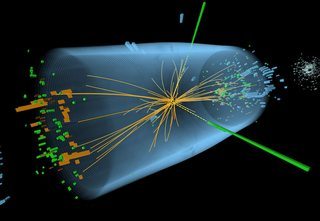Introduction
Spontaneous symmetry breaking is a fundamental concept in physics that plays an essential role in our understanding of various physical systems, from particle physics and condensed matter physics to cosmology. The Expanding Vibrational Web Theory is a novel perspective on the nature of the universe that attempts to explain such complex phenomena, including spontaneous symmetry breaking, through the interconnectedness of probability waves. This article will explain spontaneous symmetry breaking and describe how the Expanding Vibrational Web Theory accounts for this behavior within the universe's fabric.
Spontaneous Symmetry Breaking: A Basic Overview
Spontaneous symmetry breaking occurs when a symmetric physical system transitions to an asymmetric state due to small perturbations or fluctuations. In the simplest terms, this phenomenon can be understood by picturing a ball precariously balanced at the top of a symmetrical hill. Although the ball is initially in a symmetric state, the slightest external disturbance, such as a gust of wind, will cause the ball to roll down one side of the hill, breaking the symmetry and resulting in an asymmetric state.
In particle physics, spontaneous symmetry breaking plays a crucial role in explaining the behavior and interactions of elementary particles. The Higgs mechanism, which involves spontaneous symmetry breaking, describes how particles acquire mass by interacting with the Higgs field. As the early universe cooled, the Higgs field underwent symmetry breaking, taking on a non-zero value and giving particles their mass.
The Expanding Vibrational Web Theory: A Novel Explanation
The Expanding Vibrational Web Theory offers an innovative approach to understanding the universe by positing that it is composed of an interconnected web of vibrating probability waves. These waves interact and form the fabric of spacetime, giving rise to particles, energy states, and quantum entanglement. Within this framework, spontaneous symmetry breaking occurs due to the interactions between interconnected probability waves.
According to the Expanding Vibrational Web Theory, the initial state of the universe can be represented by a symmetric system of interconnected probability waves. However, due to random fluctuations, some of these waves interact with each other in such a way that the symmetry of the system is disrupted. These interactions lead to a breakdown of the original symmetry, resulting in the emergence of new particles, energy states, and patterns within the vibrational web.
As these probability waves continue to interact and form more complex structures, the system transitions from a symmetric state to an asymmetric one, giving rise to the diverse range of particles, energy states, and interactions observed in the universe today. In this context, spontaneous symmetry breaking emerges as a natural consequence of the interconnected nature of probability waves and their interactions within the Expanding Vibrational Web Theory framework.
Conclusion
Spontaneous symmetry breaking is a crucial phenomenon that shapes our understanding of various physical systems and their properties. The Expanding Vibrational Web Theory offers a fresh perspective on this behavior by attributing it to the interactions between interconnected probability waves that form the universe's fabric. As the vibrational web continues to expand and evolve, our comprehension of spontaneous symmetry breaking and other fundamental interactions could deepen, revolutionizing our understanding of the universe and our place within it.
















